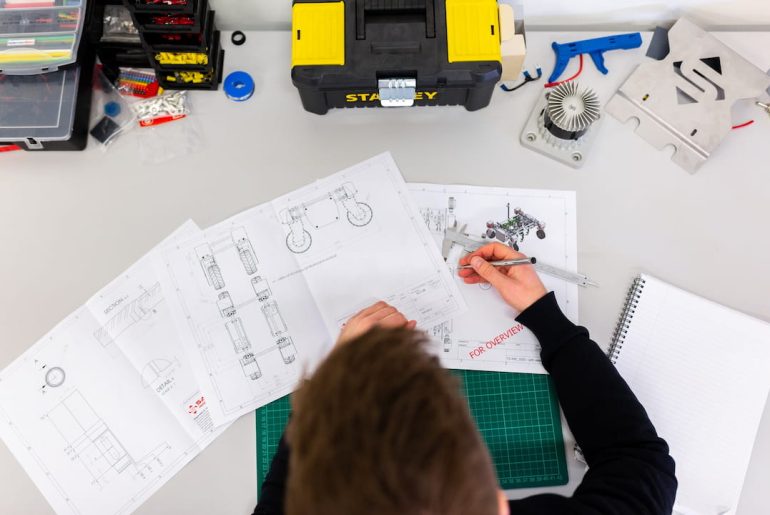
Precision drawing instruments are essential in engineering and architecture to ensure accurate and detailed drawings. These tools are crucial in designing structures, creating schematics, and developing mechanical parts. They capture every line, curve, and dimension with utmost accuracy. The article explores the importance of these instruments, the different types available, factors to consider when choosing them, maintenance tips, and how advanced tools and technologies can enhance precision. By understanding the significance of these instruments and making informed choices, engineers can improve the quality of their drawings and the success of their projects.
Understanding the Importance of High-Quality Instruments
High-quality drawing instruments play a crucial role in the world of engineering and architecture. They are meticulously designed and crafted to meet the demands of engineers who strive for perfection. These instruments provide precise measurements, smooth lines, and durable performance, ensuring superior drawings. Using top-quality drawing instruments elevates an engineer’s game, offering unparalleled accuracy and the ability to create intricate designs with confidence. These instruments are also durable, lasting for years without losing their effectiveness. Additionally, they boast intuitive features like adjustable scales, ergonomic grips, and sleek designs, making the drawing experience enjoyable.
Exploring Different Types of Precision Drawing Instruments
Before the digital revolution, engineers and architects relied on traditional drawing instruments such as compasses, rulers, protractors, and mechanical pencils. These tools are still essential today, even in our technological world.
Digital drawing instruments have become popular among engineers, offering a combination of precision and convenience. Digital pens, tablets, and software allow for seamless creation, editing, and sharing of drawings, with features like undo/redo and easy scaling.
Different engineering disciplines have their specialized drawing instruments. Whether you’re a mechanical engineer, civil engineer, or electrical engineer, there are instruments tailored to your specific needs. These instruments ensure that all engineering fields are supported, from drafting machines for architectural drawings to rulers for pipe design.
Factors to Consider when Choosing Top-Quality
Before choosing suitable drawing instruments, you must understand your specific needs, such as the type of projects, level of detail, and measurements required. This will help you narrow down your options. When selecting high-quality instruments, consider the material used, craftsmanship, and brand reputation to ensure durability. Additionally, prioritize ergonomics and user-friendliness to make your drawing experience comfortable. With precision drawing instruments, embrace your inner artist and let your engineering drawings shine with accuracy and personality.
How to Maintain and Care Instruments
Taking care of your engineering drawing instruments is essential for their longevity and optimal performance. Regular cleaning is vital to remove dust and debris that may affect precision. Choose a soft cloth or brush to keep it gentle and steer clear of harsh chemicals. When storing the instruments, use a dedicated case or pouch to protect them from scratches. Avoid extreme temperatures and moisture, as they can harm accuracy.
Aside from cleaning and storage, regular maintenance practices can prolong the lifespan and performance of the instruments. Check for wear or damage, replacing or repairing any faulty parts. Lubricate movable parts for smooth movement and prevent stiffness. Sharpen pencils and lead tips for precise lines and details.
By incorporating these maintenance practices into your routine, you can keep your engineering drawing instruments in top shape, allowing for precise and accurate designs.
Case Studies: Successful Implementation in Engineering Projects
The use of high-quality drawing instruments has proven beneficial in various engineering projects. In structural engineering, precision rulers, protractors, and compasses were utilized for accurate and detailed drawings, leading to faster construction and fewer mistakes. In aerospace design, engineers relied on top-quality instruments like calibrated scales and drafting pencils for intricate detailing and precise measurements, resulting in improved manufacturing processes and overall success. Similarly, in electrical engineering, implementing high-quality instruments such as precise templates, fine-tipped pens, and specialized erasers helped create accurate schematics, reducing errors during implementation and enhancing system functionality.
Conclusion
Precision drawing instruments are crucial for engineers and designers aiming for accuracy in their work. Engineers and architect can significantly enhance their precision and efficiency by investing in high-quality tools, understanding their types, considering important factors, and maintaining them properly. These instruments form the foundation of meticulous and flawless drawings, ensuring reliable and durable results. It is essential to familiarize oneself with various instruments to select the most suitable ones for specific projects. Additionally, engineers must pay attention to factors like lighting, stability, and alignment to eliminate errors. Regular cleaning, lubrication, and calibration are key to prolonging the life and performance of these instruments.






